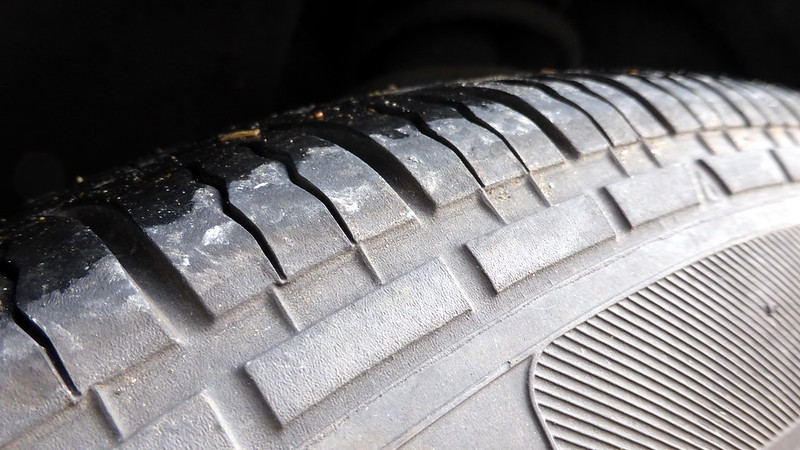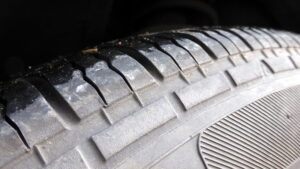
[Image credit “tyre” by Sean MacEntee is licensed under CC BY 2.0 ]
When his car went for an MOT, Henry Reynolds was warned that the two rear tyres on his car were close to the legal limit. When a fatal accident involving his car later took place, it was noted that 7,000 miles had been driven, but the tyres had not been replaced.
In what was described as a landmark case, Reynolds was prosecuted for aiding and abetting causing serious injury and death by dangerous driving.
Reynolds was a passenger in his car being driven by a friend, TJ Sam Quirke, who was over the drink-drive limit. Quirk accelerated to between 65 and 72mph on a road with a 30mh limit. The car was described as fishtailing in wet weather and crashed into another car. The other car driver was killed, and his passenger was seriously injured.
The prosecution against Reynolds was based on the fact that he knew the car was unroadworthy and of the effect the tyres were having on the vehicle in wet weather, including fishtailing. He allowed his friend to drive the car in that dangerous condition.
Quirk pleaded guilty to causing death by dangerous driving and was sentenced to five years and three months’ imprisonment. The judge dealing with Reynolds said that it was an unusual case presenting a difficult sentencing problem. The problem was that the advocates could not find any other similar case that had previously come before the courts. There are no sentencing guidelines for the offences, a precedent could not be found, and it was an unusual case.
Causing death by dangerous driving is a case that can only be dealt with at the Crown Court, and it currently carries a maximum sentence of 14 years imprisonment. The sentence given to Quirk indicates that the driving was such that it created a substantial risk of danger. If Reynolds had been the driver receiving the sentence that he did, it would have been a sentence from the lowest bracket. That lower bracket provides for a starting point for sentence of 3 years, with a range of 2 to 5 years custody.
Aiding and abetting is a common-law offence rather than one created by law, although legislation does set out how aiders and abettors should be dealt with at trial. Section 8 of the Aiders and Abettors Act 1861 says that any person facing the offence should be “tried, indicted, and punished as a principal offender”. It could be argued that Reynolds and Quirk should have received the same sentence, but there may have been mitigating factors relating to Reynolds or his part in the offence that has not been reported, resulting in the lower sentence. For example, Reynolds may have played no role in the speeds driven by Quirk and may even have discouraged it.
Reynolds was sentenced to two years and six months imprisonment. It isn’t known whether he is seeking to appeal the sentence or not, but it is undoubtedly a stark warning that you do not need to be the driver of the vehicle in these cases to receive a substantial sentence.
How can we help?
We ensure we keep up to date with any changes in legislation and case law so that we are always best placed to advise you properly. If you would like to discuss any aspect of your case, please contact any member of our vastly experienced Criminal Defence team, for assistance with any criminal law related matter.
–
Mr John Stokes (John.Stokes@danielwoodman.co.uk),
Mr Anthony Pearce (Anthony.Pearce@danielwoodman.co.uk) or
Mr Daniel Woodman (Daniel.Woodman@danielwoodman.co.uk).










